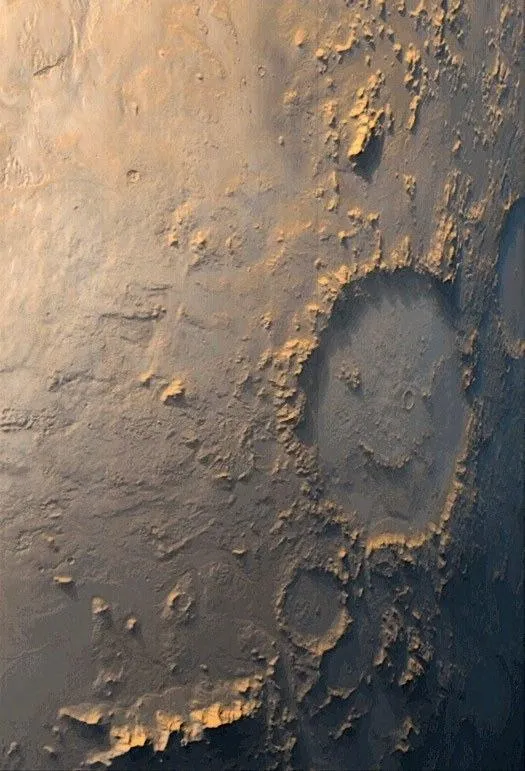The Martian Smile: Unveiling the Happy Face Crater on Mars
Mars, our intriguing planetary neighbor, continues to surprise and delight with its diverse geological features. Among the vast expanse of impact craters and ancient riverbeds, one particular formation has captured public attention for its remarkably cheerful appearance: a crater that distinctly resembles a smiley face.
The Curious Case of the Happy Face Crater
This charming Martian landmark, officially known as Galle Crater, is located in the Argyre Planitia region of Mars's southern hemisphere. While images of this "happy face" often resurface, reminding us of the planet's captivating and sometimes whimsical geology, Galle Crater itself has been a point of scientific interest for its complex morphology. The crater measures approximately 230 kilometers (143 miles) in diameter, making it a substantial feature on the Martian surface, large enough to contain the entire metropolitan area of a major city.
How Nature Creates a Smile
The distinctive "eyes" and "mouth" of the smiley face are not artificial constructions but are entirely natural formations sculpted by billions of years of geological processes. The two "eyes" are smaller impact craters situated within the larger Galle Crater. The "mouth" is formed by a series of curved troughs or channels, likely created by erosion, ancient fluvial activity, or tectonic stresses, perfectly aligned to complete the iconic expression.
This incredible alignment was captured by the European Space Agency's (ESA) Mars Express orbiter, which has been diligently mapping the Red Planet since 2003. Its high-resolution stereo camera (HRSC) has provided stunning three-dimensional images of Mars's surface, revealing intricate details like these, helping scientists understand the planet's geological history and potential for past habitability.
Pareidolia on the Red Planet: A Familiar Phenomenon
The perception of a "smiley face" in Galle Crater is a classic example of pareidolia—the psychological phenomenon where the brain perceives familiar patterns (like faces or animals) in random or ambiguous stimuli. Humans are particularly prone to seeing faces in clouds, toast, or, in this case, planetary landscapes. It's a testament to our pattern-seeking brains.
This isn't the first time Mars has played host to such a phenomenon, nor is it the most controversial. Perhaps the most famous instance is the "Face on Mars," a mesa in the Cydonia region that, when viewed under specific lighting conditions by NASA's Viking 1 orbiter in 1976, appeared strikingly humanoid. This sparked decades of intense speculation, fueling conspiracy theories about ancient Martian civilizations and their possible connection to Earth, even inspiring documentaries and games like "Cydonia." While later high-resolution images from missions like Mars Global Surveyor and Mars Express definitively proved it to be a natural geological formation—a mere trick of light and shadow—the "Face on Mars" solidified its place in pop culture. The smiley crater, however, is a far less ambiguous and more universally charming example of natural artistry, offering a lighter take on Martian pareidolia.
Image of the Martian Smiley Crater

Image Credit: ESA/DLR/FU Berlin, G. Neukum
Conclusion
The "happy face" crater serves as a delightful reminder of the wonders of planetary geology and the surprising beauty hidden in plain sight across our solar system. It highlights not only the power of natural forces to sculpt incredible landscapes but also our innate human tendency to find meaning and familiarity in the cosmos. As missions like Mars Express continue to explore, who knows what other charming or uncanny formations await discovery on the Red Planet, inviting us to look closer and ponder the universe's endless surprises?




